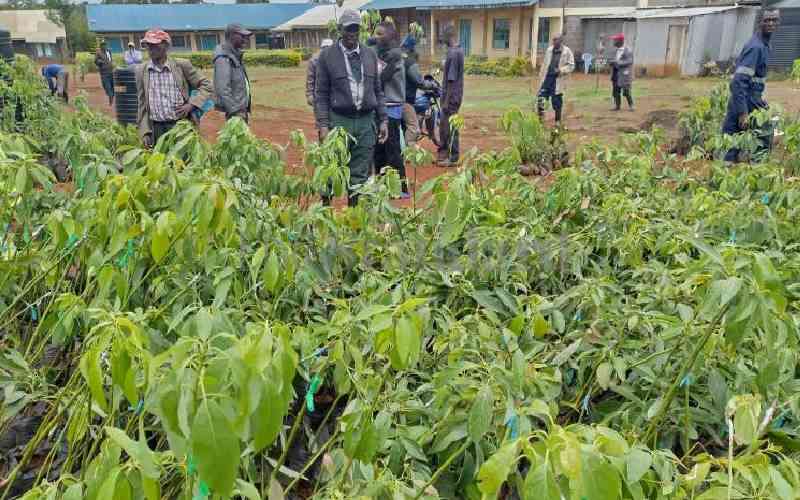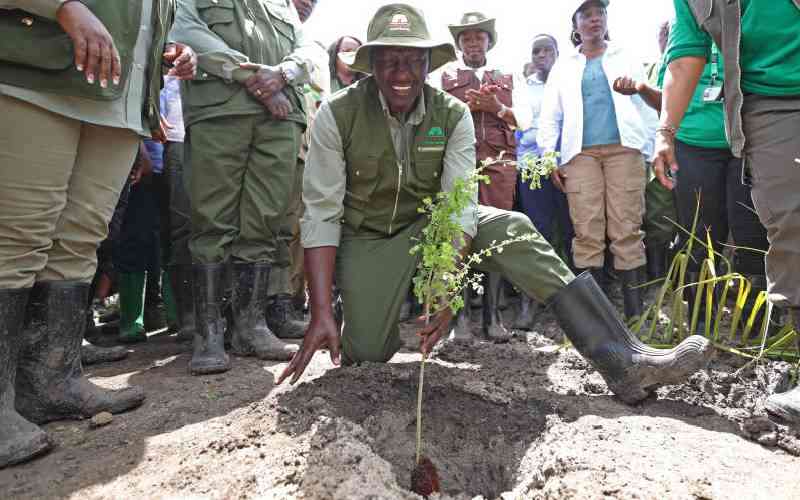
More than half of the world's population lives in cities. By 2050, nearly 70 per cent of the world will be urbanised. Although cities occupy only three per cent of the Earth's surface, they consume 78 per cent of energy and emit 60 per cent of carbon dioxide.
Woodlands, forests and trees in a city and on its fringes perform a wide range of vital functions - such as storing carbon, removing air pollutants, assisting in food, energy and water security, restoring degraded soils and preventing drought and floods. In a medium-size city, for instance, urban trees can reduce the loss of soil by around 10,000 tonnes per year.
Trees in urban areas can reduce extreme temperatures and mitigate the effects of climate change, reduce air conditioning needs by 30 per cent and shield homes from the wind. Urban and peri-urban forests can increase the resilience and quality of watersheds and water reservoirs by preventing erosion, limiting evapotranspiration and filtering pollutants.
Ouarzazate in Morocco is one of the cities going green in the world today and is currently home to the largest concentrated solar power plant in the world.
By 2020, the $9 billion solar power plant is expected to generate 580 megawatts (MW), enough electricity to power over a million homes. Morocco however plans to generate 42 per cent of its energy from renewables by 2020, rising to 52 per cent by 2030, with solar, wind and hydropower each providing a third of the total.
However, many cities are already demonstrating commitment to a more sustainable future and there are many excellent examples of green urban development, according to a new FAO publication called "Forests and sustainable cities - Inspiring stories from around the world".
Rapidly growing
For instance, In 2012, Beijing initiated the largest afforestation programme in its history. In suburban and peri-urban areas, most lands were afforested after moving low-end industries. Forests, which now cover more than 25 per cent of the city plain - an increase of 42 per cent - provide neighbourhoods with more space for recreation.
Karura Forest in the central north of Kenya's capital Nairobi was once a crime-ridden. The forest's proximity to the rapidly growing city led to plans to reduce the forest area to make way for property development. But when the local communities became involved in its management, its fortunes turned around. Conservationists, led by environmental activist Wangari Maathai, launched a highly publicised campaign to save the forest.
Collaboration with various stakeholders played a decisive role in improving forest management of the Karura Forest. Local people have benefited from direct participation.
The forest is no longer a place of danger for them but rather a source of opportunities. It employs 46 permanent workers, 36 of whom are from surrounding communities. It has also become a significant tourist attraction: From zero visitors in 2009, the forest now welcomes on average 16 000 visitors per month.
Clearing vegetation
Talking about forests, a fire last month destroyed part of Mt Kenya National Park in Tharaka-Nithi county. In 2017, more than 17,000 acres of forest were destroyed by fire in the Aberdares in Kenya. There are three conditions that contribute to wildfires which firefighters refer to as the fire triangle: Fuel, oxygen and a heat source.
Fuel is any flammable material including trees, grass and brush. Air supplies the oxygen a fire needs to burn. Heat sources help spark the wildfire and bring fuel to temperatures hot enough to ignite. Lightning, burning campfires or cigarettes, hot winds and even the sun can all provide sufficient heat to spark a wildfire.
Stay informed. Subscribe to our newsletter
Firefighters can however fight wildfires by depriving them of one or more of the fire triangle fundamentals. Traditional methods include water dousing and spraying fire retardants to extinguish existing fires.
Clearing vegetation to create firebreaks starves a fire of fuel and can help slow or contain it. Firefighters also fight wildfires by deliberately starting fires in a process called controlled burning. These prescribed fires remove undergrowth, brush, and ground litter from a forest, depriving a wildfire of fuel.
Although often harmful and destructive to humans, naturally occurring wildfires play an integral role in nature. They return nutrients to the soil by burning dead or decaying matter.
They also act as a disinfectant, removing disease-ridden plants and harmful insects from a forest ecosystem. And by burning through thick canopies and brushy undergrowth, wildfires allow sunlight to reach the forest floor, enabling a new generation of seedlings to grow.
Private sector which drives the economies of many nations can do much more to support forestation and develop long-term sustainability projects in partnership with their governments and international organisations giving strategic support to make the projects more international learning from best practice globally.
Mr Diaz is Business Leader and Conservationist
 The Standard Group Plc is a
multi-media organization with investments in media platforms spanning newspaper
print operations, television, radio broadcasting, digital and online services. The
Standard Group is recognized as a leading multi-media house in Kenya with a key
influence in matters of national and international interest.
The Standard Group Plc is a
multi-media organization with investments in media platforms spanning newspaper
print operations, television, radio broadcasting, digital and online services. The
Standard Group is recognized as a leading multi-media house in Kenya with a key
influence in matters of national and international interest.
 The Standard Group Plc is a
multi-media organization with investments in media platforms spanning newspaper
print operations, television, radio broadcasting, digital and online services. The
Standard Group is recognized as a leading multi-media house in Kenya with a key
influence in matters of national and international interest.
The Standard Group Plc is a
multi-media organization with investments in media platforms spanning newspaper
print operations, television, radio broadcasting, digital and online services. The
Standard Group is recognized as a leading multi-media house in Kenya with a key
influence in matters of national and international interest.









